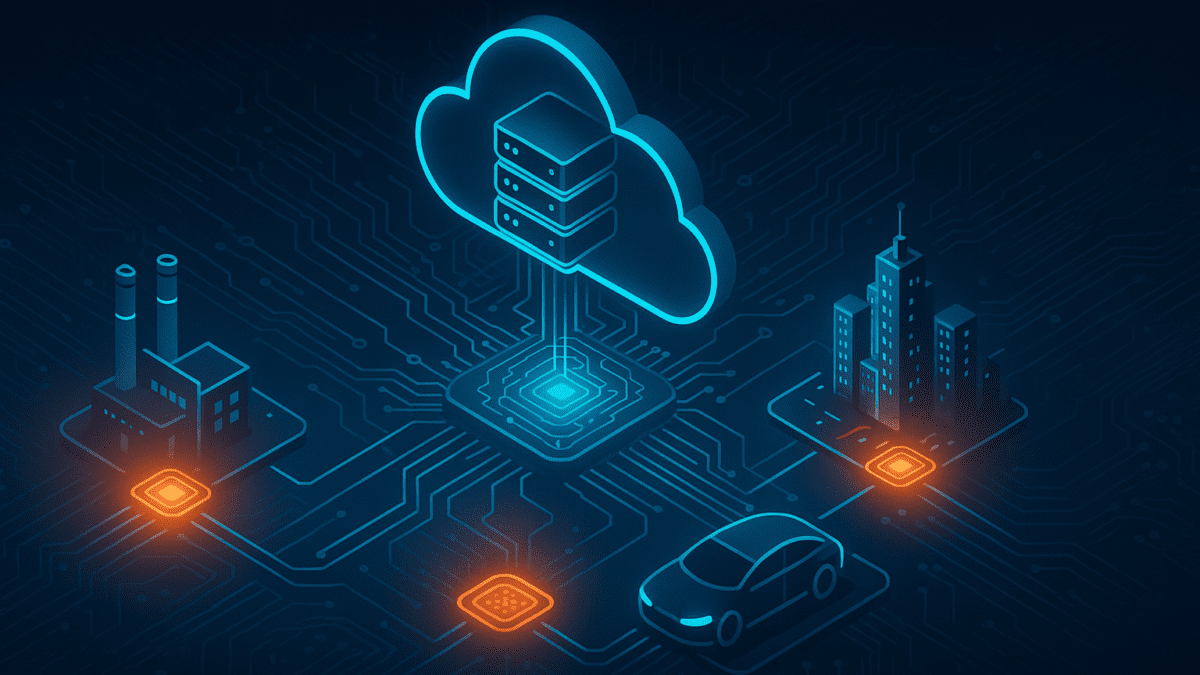The Rise of Edge Computing: Why It’s Replacing Cloud in Certain Applications
Table of Contents
Introduction
For over a decade, cloud computing has dominated the IT landscape, enabling global scalability, reduced infrastructure costs, and on-demand access to computing power. But in 2025, a new paradigm is emerging: edge computing.
Instead of processing data in faraway data centers, edge computing processes data closer to where it’s generated — at the “edge” of the network. From autonomous vehicles to real-time industrial monitoring, this shift is becoming essential for applications that demand speed, low latency, and reliability.
What is Edge Computing?
Edge computing is a distributed computing framework that brings computation and data storage closer to the location where it’s needed.
Unlike traditional cloud setups where data travels to a centralized server for processing, edge computing reduces latency by processing data locally on devices or edge servers.
Example:
- A self-driving car making split-second decisions can’t wait for data to travel to a distant cloud server. Edge computing ensures the car processes information instantly.
Why Edge is Replacing Cloud in Certain Applications
While cloud computing remains crucial for many workloads, it’s not ideal for every scenario. Edge computing is replacing the cloud in specific use cases due to three main reasons:
- Ultra-Low Latency Requirements
- Applications like autonomous drones, healthcare monitoring devices, and AR/VR require real-time responses.
- Bandwidth Constraints
- Transmitting massive amounts of data to the cloud can be costly and slow. Edge reduces the need for continuous data transfer.
- Data Privacy & Compliance
- Processing sensitive data locally ensures better compliance with data protection laws like GDPR and CCPA.
Key Advantages of Edge Computing
- Speed and Responsiveness: Reduces latency from seconds to milliseconds.
- Improved Reliability: Local processing ensures applications continue functioning even if internet connectivity drops.
- Cost Efficiency: Minimizes cloud storage and bandwidth expenses.
- Enhanced Security: Limits data transmission, reducing the attack surface.
Real-World Use Cases of Edge Computing in 2025
- Autonomous Vehicles: Cars must instantly process sensor data to make driving decisions. Relying solely on the cloud could lead to dangerous delays.
- Healthcare Monitoring: Wearable devices process patient data locally to provide instant alerts without depending on cloud round-trips.
- Smart Cities: Traffic lights, surveillance systems, and public infrastructure use edge nodes for real-time decision-making.
- Industrial IoT (IoT): Factories leverage edge computing to run predictive maintenance models on-site, preventing downtime.
- Retail and AR/VR Experiences: In-store devices process customer interactions locally, enhancing shopping experiences without lag.
Edge vs Cloud: Not a Full Replacement
Edge computing doesn’t mean the end of cloud computing. Instead, it complements it.
- Cloud is best for large-scale data storage, analytics, and global collaboration.
- Edge is ideal for real-time processing and latency-sensitive tasks.
The future is hybrid architectures, where edge handles instant processing while the cloud manages long-term storage and analytics.
Challenges of Edge Computing
Despite its benefits, edge computing comes with hurdles:
- Infrastructure Costs: Deploying edge devices can be expensive initially.
- Management Complexity: Maintaining multiple edge nodes is more challenging than managing centralized cloud servers.
- Standardization Issues: The industry still lacks universal standards for interoperability.
The Market Outlook
According to Grand View Research, the global edge computing market is projected to grow at a 37.9% CAGR from 2024 to 2030. The push for 5G adoption, AI-powered devices, and IoT expansion will further accelerate this growth.
How Businesses Can Prepare for the Edge Shift
- Identify latency-critical processes in your operations.
- Adopt hybrid strategies that combine cloud and edge effectively.
- Invest in security for local devices to prevent breaches.
- Collaborate with edge providers like AWS IoT Greengrass, Azure IoT Edge, or Google Distributed Cloud Edge.
Conclusion
The shift from centralized cloud computing to decentralized edge processing is more than a technological trend — it’s a necessity for the next generation of real-time, data-intensive applications.
Businesses that embrace edge computing now will be better equipped to deliver faster services, improve user experiences, and maintain a competitive edge in 2025’s digital economy.
See Also: First-Party Data is the New Oil: Fueling White Paper Lead Gen in a Privacy-First World





